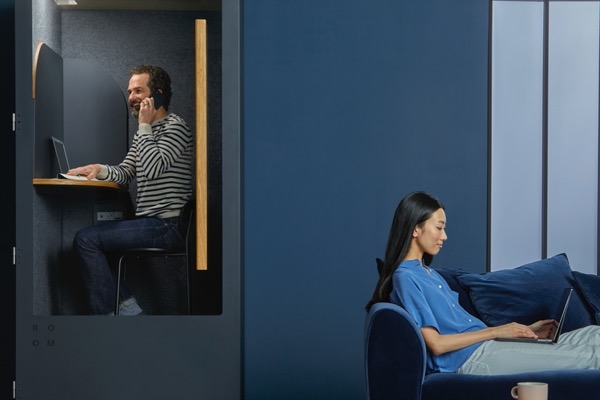Embrosa, as you probably know, was founded in The Netherlands. On the globe, The Netherlands is just a little spec of land in Europe, and our country is smaller than most states in the US. It’s just 312 kilometers (194 miles) from north to south and 264 kilometers (164 miles) from east to west. I can imagine you thinking, Embrosa’s team members all come from The Netherlands, and commuting can never take that long so they’ll surely work together in some nice office...

Well, no. Those that follow us on Instagram know, we are a ‘remote team’. There are 4 Embrosians in The Netherlands, but we also have 2 Embrosians that live abroad. And to make this a little more interesting, we live in different time zones. So how do we stay in-sync and make sure the asynchronous remote work and communication does not consume our private lives? We’ll share our tips, tricks, but also our challenges with you. And maybe you can help us solve some of those challenges?
The Embrosa team members that are situated in The Netherlands live in different parts of The Netherlands. My co-founder Rogier and Maartje (our part-time content creator) both live in the middle of The Netherlands, in Utrecht, where Embrosa’s flex-office is located. I myself live in the south of The Netherlands, next to the German border in a city called Venlo. Our content manager Myrthe works part-time at Embrosa, next to being Editor in Chief of an optical magazine, and she lives in Zaandam, next to Amsterdam. And in another timezone, we have our developer Arthur who lives in Uzhgorod, Ukraine. And lastly, again in a different timezone, there’s Lies, our social media fanatic, who is originally from The Netherlands but is living in Washington D.C. in the United States and who supports us from there (part-time). And right now, we’re looking for another marketer. Where will the 7th Embrosian live?

Why would you ever choose such a remote set-up
Well, actually, we intentionally chose this remote set-up! When founding Embrosa, Rogier and I did not live in the same city. We were on the lookout for an office where we could meet halfway, but then realized we’d both have to commute 2 hours every day just to sit together and work in the same office. This would not only increase travel expenses, next to the cost of renting a full-time office (and we consciously chose a low-cost way of living and running our business), it would also diminish every effective workday with 4 hours. We believed this time would be better spent on building our business.
Remote work is a working style that allows professionals to work outside of a traditional office environment. It is based on the concept that work does not need to be done in a specific place to be executed successfully
We decided to both work from our homes, remotely, using Slack to communicate and to meet once a week to work side by side and face to face. And, this solution works really well for us. The upsides are obvious! Our start-up hardly spends any money and time on renting office space(s) or travel. Plus, working remotely also allows us to work when we’re most productive (for some, me, this is very early in the AM, for others this could be evenings). And, we can easily (well, most of the time that is...) blend in work, family, and social life in a way that suits each of us best.
When we realized we needed an extra developer, and since remote work was already our standard, it was a no-brainer to broaden our search, perhaps even outside of The Netherlands. There is so much talent ‘out there’, why not search someone that is a 100% fit for both our budget and our company culture. And sourcing talent globally seriously increases the fishing pond! Arthur could not have been a better match, and we still thank SharpMinds for connecting us.
How Embrosa stays in-sync as a remote team
At Embrosa, trust is our baseline, it’s our starting point. We couldn’t work in any other way. That’s not for everyone, but it fits us. And so, we tell every new Embrosian to feel free to decide where and when to work remotely. We measure success by results, not by hours or hour charts. To be able to do so of course, we need that foundation of trust, and we need to have the companies goals in line. What are we working towards? We work agile, in short sprints. Both our developer team and our communication & content team. We connect daily during our Daily Stand-up Meeting. This facilitates us staying in touch, connected. After that meeting, however, we all go our separate ways in our different countries and timezones, doing what we need to do. Whenever and wherever. In the beginning, I felt like I had to control everything and everybody. Balance the hours that I worked and the hours my co-founder and team members worked. But why, really?

I quickly learned to trust that everybody puts in the maximum possible for him/her that day, energy and time-wise. We all want Embrosa to succeed, no doubt our intentions are all in line. And seeing the hours and effort everybody puts in, I really do feel this strategy works for us. Especially when I also see how quickly we ‘build’ new things and solve bugs for example, with respect to the size of our team. Agile, remote, yet in-sync!
However, Rogier, my co-founder, and I do need to see each other more often to completely stay in-sync. Because sometimes, working remotely is sooo efficient, that you tend to skip the small chit-chat about energy levels, what we’re feeling, and how things are at home, with the family. Because Rogier and I differ a lot, personality-wise, we need to touch base face-to-face often to fully understand each other. Once you sit down with someone to drink coffee, eat a sandwich or just go out for a little walk during lunchtime, you see their non-verbal body language. You feel their energy and you get to sync again. Not business-wise, but from one human being to another human being. We noticed that we need this to keep our self-awareness, consciousness and to take care of each others' well being. That’s why we meet IRL once every two weeks at the least, mostly in our flex office in Utrecht, to just hang out and work together.
Workations to work AND be together
We organize face-to-face syncing for our team members too, trying to get everyone together. Not as often as we might like, but nonetheless, we make it happen and we do so on a tight budget. We organize an annual Hackathon. During our annual long weekend, we work together on one subject and everybody puts in his or her talent and expertise. Before we start the weekend, we agree upon working hours. So - during this one weekend a year - we deviate from the strategy that everybody decides their own working hours and location. We intentionally work from 9 AM till 4 PM, and after that, work is off-limits. We BBQ, we hang-out, we go sightseeing, drink beer and dream about making enough money to celebrate our next workation Hackathon in New Zealand. Or maybe have one every six months!!

We found that agreeing on these working hours during this weekend is very important. Because some of our Embrosians are heart types (Enneagram showed me that I am a ‘head type’ myself) and they truly need the time to connect to others on a personal level. Myself, I connect to others mostly during substantial discussions. May it be politics or our own business. But when I keep ‘working’ and having these deep(er) discussions, I tend to take away the possibility for the heart types to connect. So we decided to officially end the workdays and ‘open’ leisure time and collectively. Head, heart, and gut, all together!
.jpg)
During these weekends, we sync business-wise and we sync on a personal level. We move the needle forward on one of our collective projects and our team spirit roars!! We take this positive energy home with us when we go our separate ways again after our annual Hackathon, and keep it alive by seeing each other on a daily basis on our screens.
The biggest challenge is the bigger picture
I guess after reading this, it might sound like remote working to me is the holy grail of work. But, that certainly isn’t the case. Where you’d normally gather everyone into a conference room for an extra brainstorm or a stand-up, we have to schedule and plan to get everybody together in the same Google Meet. And with a few part-time colleagues and their different time-zones, this is quite the challenge.
I find this especially challenging when you want to keep everybody up to date and engaged in the bigger picture of the company. Keeping each other up-to-date about tasks or projects is one thing. But how to share overall feedback of customers, projects that did or did not come through, possible changes in burn-rate and explaining why all of this is happening. And reflecting on this together, takes time, time to talk things through. To share thoughts. Ideas. And to have a worthy retrospective is quite a challenge in a Google Meet.
That is why we started our Daily Stand-up Meetings. It’s daily, and always at the same time when we can all log in despite our different time zones. This way, everybody that works on that day comes together for 30 minutes. We all answer 3 questions during the stand-up. 1) What have you been working on yesterday 2) What will you be working on today and 3) Are you stuck with anything (do you need help and from whom). This routine ensures that the stand-up stays within the agreed-upon timeframe.
But what if you are not there to attend, because this is not your working day at Embrosa? You miss out on all the updates and what everybody's been working on. We could write reports in Slack after our stand-ups in Slack (and sometimes we try with journal updates), but we've never really managed to make it succeed yet.
My dream scenario is based on the way this works in the military, where I started my professional career as some of you may know: The commander calls in her lieutenants and she tells them the assignment. Instead of telling them how to do it, she only specifies the end goal of the assignment and why it is so important for the greater goal. And the commander trusts her lieutenants to take the best decisions on her behalf during the execution of the assignment.

Although we try to organize our communication, we haven’t gotten it to work yet. Maybe because our team is still relatively small and mostly works with part-timers. Maybe because we don’t have process managers, we are all worker bees right now. Maybe because we are not verbose enough about our end goals, our targets. I’m curious what you think if you experience(d) the same challenge (in your young start-up lives) and how you might have solved this.
How to resist the ‘always on’ mode
And finally, what I find challenging about working remotely, is turning yourself ‘off’ when others are just switching to ‘on’ mode in their time zone. I start working early, but others start later (sometimes due to time zones, or maybe they're just more productive at night) and they ask questions whenever I am in desperate need of me-time, unplugging, hanging out with friends or spending time with my husband.
You don’t want them to come to a grinding halt when you don’t answer their questions right away. But if you don’t say ‘NO’, you never have time to unwind, and I really need to unplug to get re-energized and replenished for the next day. In the beginning, I replied to every question, always, asap. I was always online, ready to help the team. But then I came to a grinding halt myself, nearly dropping myself in a burn-out. So now, I deliberately go offline, take time off and let questions be. Sometimes guilt takes over, but then I see that other team members are there to help too. So by stepping aside, others step forward.
I wonder, do you run into the guilt-trap too when switching offline? If not, teach me how! If yes, how do you cope?

Melanie van Norden, Co-Founder Embrosa